The date “June 13” is a big one is sports history.
In baseball, both Christy Mathewson and Roger Clemens won their 300th games on June 13 – Mathewson way back in 1912 and Clemens in 2003.
Clemens wound up with 354 wins, 4,672 strike outs, and a 3.12 ERA. He won seven Cy Youngs.
Mathewson wound up with 373 wins and a 2.13 ERA. He was a 20-game winner eight times and a 30-game winner four times.
In the NBA:
 • In 1989, the Detroit Pistons beat the Los Angeles Lakers 105-97 in Game 4 to sweep the Finals and win the NBA title for the first time in the team’s history. This game was also Kareem Adbul-Jabbar’s last NBA game. Six Pistons hit double figures and James Worthy bucketed 40 points in a losing effort for the Lakers.
• In 1989, the Detroit Pistons beat the Los Angeles Lakers 105-97 in Game 4 to sweep the Finals and win the NBA title for the first time in the team’s history. This game was also Kareem Adbul-Jabbar’s last NBA game. Six Pistons hit double figures and James Worthy bucketed 40 points in a losing effort for the Lakers.
• In 1997, Steve Kerr hit his classic jumper with :05 to play in Game 6 to edge the Utah Jazz 90-86 and win the NBA title. Kerr finished with 9 points. Michael Jordan hit 39 and Scottie Pippen added 23. Karl Malone topped the Jazz with 21 points.
On June 13, 1964, only 4,875 fans showed up at Connie Mack Stadium to watch the Phillies play the last-place Mets.
Seeking atonement for Friday night’s blowout, Gene Mauch was sending Jim Bunning (5-2) to the mound. Mets manager Casey Stengel was answering with Frank Lary (0-0).
The Mets purchased Frank Lary from the Tigers two weeks earlier, on May 30th. This was his second start with the Mets after 10 seasons in Detroit.
“The Yankee Killer”
Frank Lary became known as “The Yankee Killer” in 1958 when he beat the World Champion Yankees seven times.
In all, he posted a record of 27-10 against the Yankees from 1955 to 1961. During that period, the Yankees were the cocks-of-the-walk, winning six American League pennants and three Word Series championships.
During his 10 seasons with the Tigers, Lary was a 21-game winner in 1956 and a 23-game winner in 1961.
This was Jim Bunning’s 12th start of the season, but he hadn’t won a game since shutting out the Houston Colt 45s nearly a month earlier on May 18th. In his only outing against the Mets, he struck out 11 Mets in a 4-1 win way back on the second day of the season.
Bunning got off to a bad start when he gave up a leadoff homer to Ron Hunt. It was Hunt’s second home run of the year and the fifth allowed by Bunning.
Lary and Bunning then swapped scoreless innings.
In the bottom of the second, Clay Dalrymple doubled with one out. Bobby Wine walked to put runners on first and second. Jim Bunning singled to help his own cause, sending Dalrymple across the plate to tie the game 1-1. Bobby Wine moved to third to put runners on first and third with one out.
Cookie Rojas hit a sacrifice fly to make it 2-1.
Bunning shut the Mets out in the top of the third.
In the bottom of the third, Johnny Callison led off with his fifth home run to make it 3-1 Phillies.
No change in score for the next two innings.
In the bottom of the fifth, John Herrnstein and Johnny Callison led off with back-to-back singles. After Richie Allen struck out for the first out, Tony Gonzalez lined a drive off the scoreboard. Herrnstein scored easily to make it 4-1. Callison also tried to score, but Roy MacMillan’s relay from Joe Christopher nipped Callison at the plate.
In the top of the sixth, Mets manager Casey Stengel used a curious bit of strategy. Stengel let Frank Lary bat for himself with one out and the Mets trailing 4-1. To begin with, Lary was a .177 career hitter. As expected, Lary made the second out when he popped to short.
Jim Hickman then hit his fifth home run of the season to cut the Phillies lead to 4-2.
The more-curious part of Stengel’s strategy surfaced when he replaced Lary with Tom Sturdivant (0-0) to start the top of the sixth. If he was going to replace Frank Lary on the mound, why hadn’t Stengel pinch-hit for him?
It made no baseball sense.
Sturdivant, who was signed as a free agent on May 10th after being released by the Kansas City A’s, was making his 13th appearance with the Mets, all in relief. He got the Phillies in order in the sixth, but came undone in the seventh.
With one out in the bottom of the seventh, Sturdivant gave up back-to-back-to-back singles to John Herrnstein, Johnny Callison, and Richie Allen to load the bases.
Tony Gonzalez hit a fly to deep left. Everybody moved up a base to make it 5-2. That left runners on second and third with two outs.
Tony Taylor then ripped a two-run single to center and it was 7-2. Taylor stole second and scored on Clay Dalrymple’s single to bump the lead to 8-2.
Jim Bunning (6-2) finished the game strong to pick up the win. Other than the two home runs, he allowed just three other hits.
Frank Lary (0-1) got his first loss in the National League ─ he went 0-2 with the Tigers before coming to the Mets.
Later, on the West Coast, the Giants beat the Braves 6-5. Bob Shaw (6-3) picked up the win in relief of Juan Marichal – who got nicked for four runs on eight hits. Jack Sanford picked up his first save. For the former Phil – who was used primarily as a starter throughout his career – it was the second save of his career.
Jack Smith (2-1) took the loss in relief of Hank Fischer.
Rookie Jim Ray Hart hit a two-run homer – his 5th – for the Giants.
The wins by both the Phillies and the Giants kept the two teams deadlocked for first place.
(Excerpted from 1964 – The Year the Phillies Blew the Pennant by Barry Bowe.)

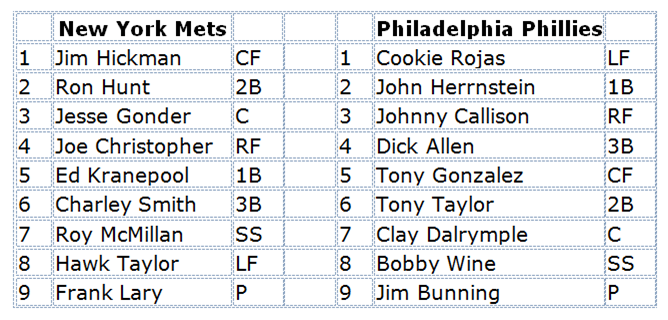

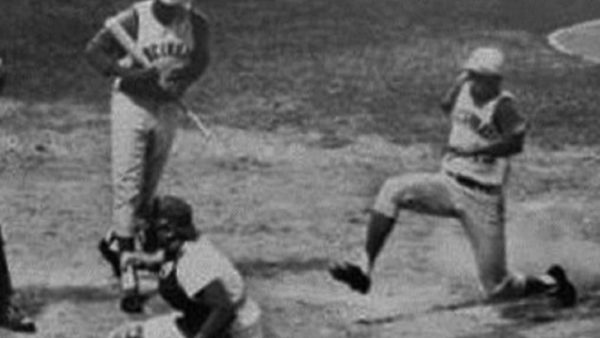
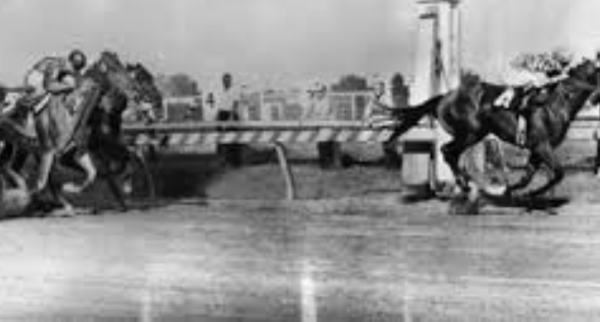



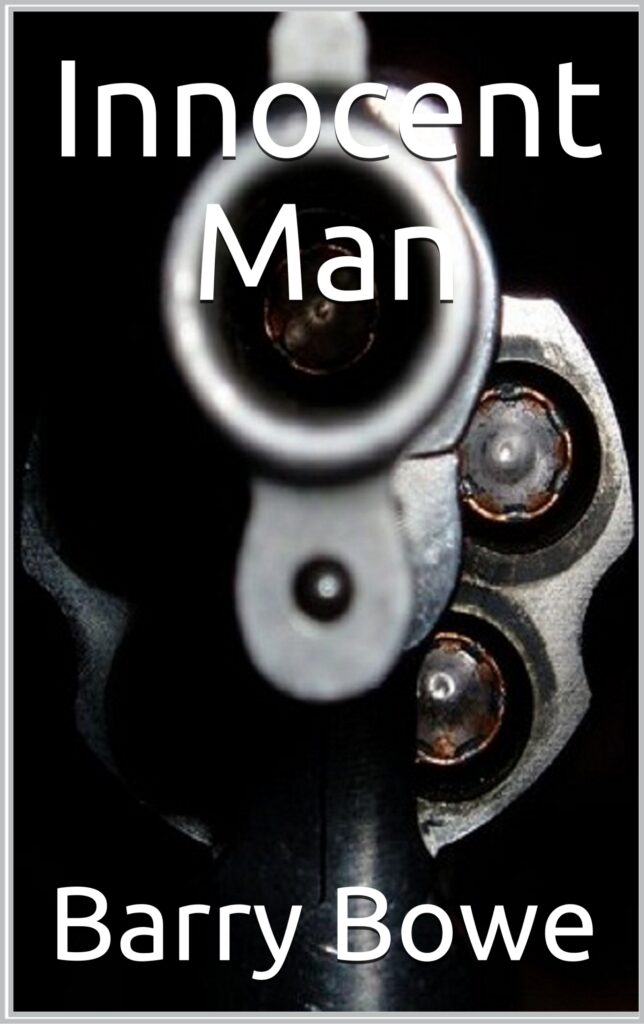
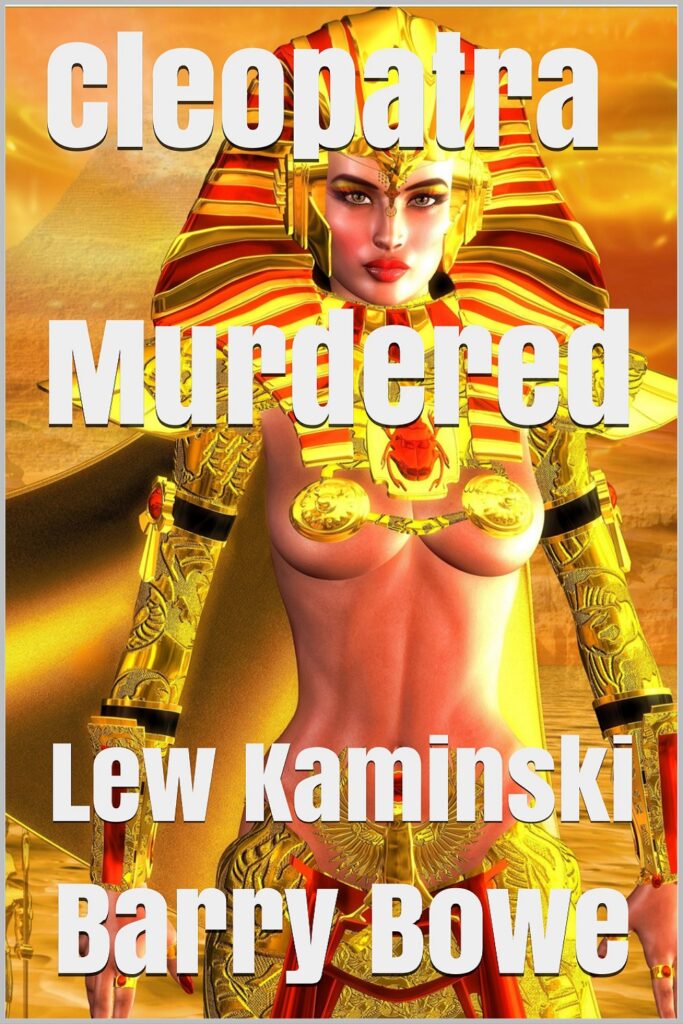
Comments
No Comments